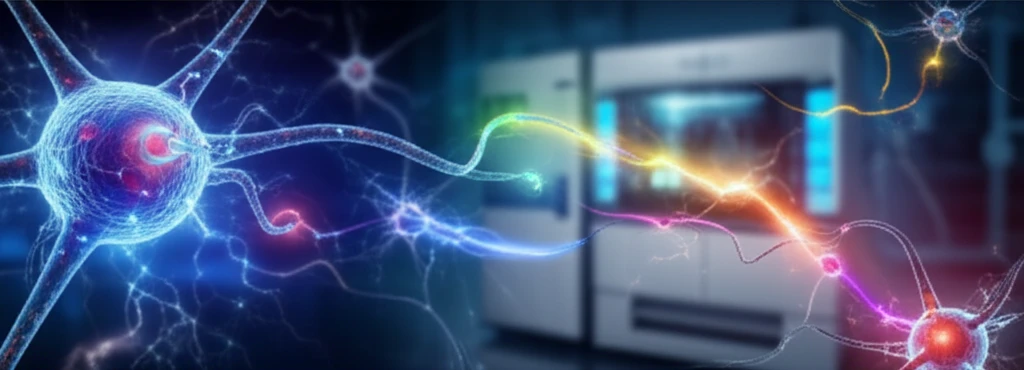
Beyond Dopamine: A New, Faster Way to Detect DBH Enzyme Changes
"Could a quicker blood test for DBH enzyme activity help us understand and treat schizophrenia, Parkinson's, and more?"
Dopamine-β-hydroxylase (DBH) is a crucial enzyme that plays a significant role in both our mental and physical well-being. It's essential for converting dopamine into norepinephrine, a key neurotransmitter involved in everything from focus and attention to blood pressure regulation. Because of its wide-ranging effects, DBH has become an important target for understanding and treating various neuropsychiatric and cardiovascular diseases.
However, measuring DBH activity hasn't always been easy. Existing methods can be time-consuming, expensive, or lack the sensitivity needed for accurate results. This is where a recent breakthrough comes in: Researchers have developed a new, faster, and more cost-effective way to measure DBH activity in human blood samples.
This article breaks down this new method, its potential applications, and why it could be a game-changer for understanding and potentially treating conditions like schizophrenia, Parkinson's disease, and more.
The UHPLC-PDA Method: A Faster Route to DBH Detection

The heart of this new approach lies in a technique called Ultra High Performance Liquid Chromatography (UHPLC) combined with a Photo Diode Array (PDA) detector. UHPLC allows scientists to separate different components in a sample much faster and with greater resolution than traditional methods. In this case, it's used to separate tyramine (a substance similar to dopamine) from octopamine, the product formed when DBH acts on tyramine.
- Sample Preparation: A blood sample is taken, and serum is separated.
- DBH Assay Reaction: The serum is mixed with a cocktail of ingredients that allow the DBH enzyme to do its job, converting tyramine to octopamine.
- Solid Phase Extraction (SPE): This is a crucial step where the sample is purified to remove any interfering substances, ensuring a clean and accurate measurement.
- UHPLC-PDA Analysis: The purified sample is run through the UHPLC system, which separates the tyramine and octopamine. The PDA detector then measures the amount of each substance.
- Quantification: By measuring the amount of octopamine produced, scientists can determine the activity of the DBH enzyme in the original sample.
Why This Matters: Potential Applications and Future Directions
This new UHPLC-PDA method has several potential applications. First, it can be used to improve our understanding of diseases like schizophrenia. The researchers demonstrated that DBH activity was significantly lower in people with schizophrenia compared to healthy individuals, supporting the dopamine hypothesis of schizophrenia.
Second, the method could be used to identify individuals at risk for developing certain conditions. By measuring DBH activity, doctors may be able to identify people who are more likely to develop schizophrenia, Parkinson's disease, or cardiovascular problems. This could allow for earlier intervention and potentially prevent the onset of these diseases.
Finally, the method could be used to screen for new drugs that affect DBH activity. Because DBH is a known drug target, this new assay could help researchers identify and develop more effective treatments for a variety of conditions. The researchers were able to link genetic variants affecting DBH expression using this method, potentially helping identify individuals who would benefit from personalized medicine.
